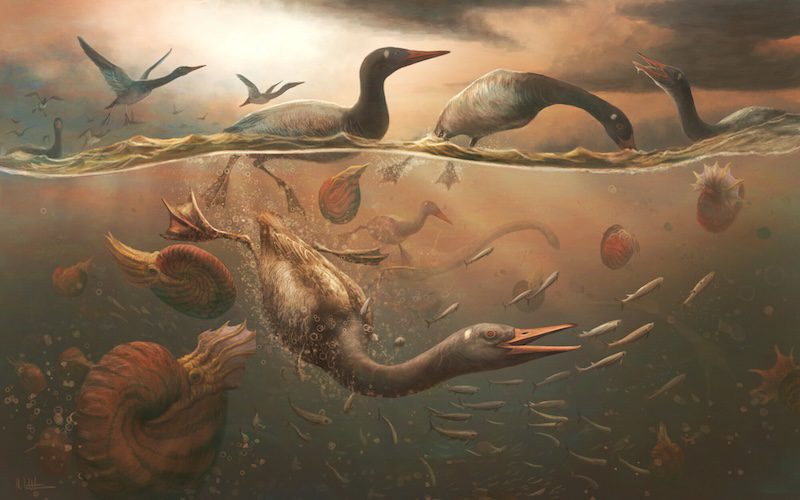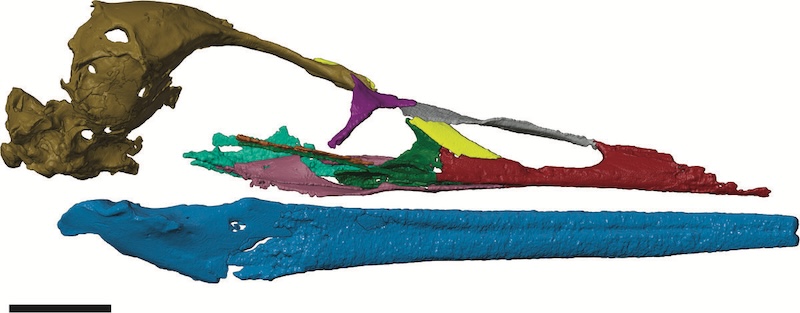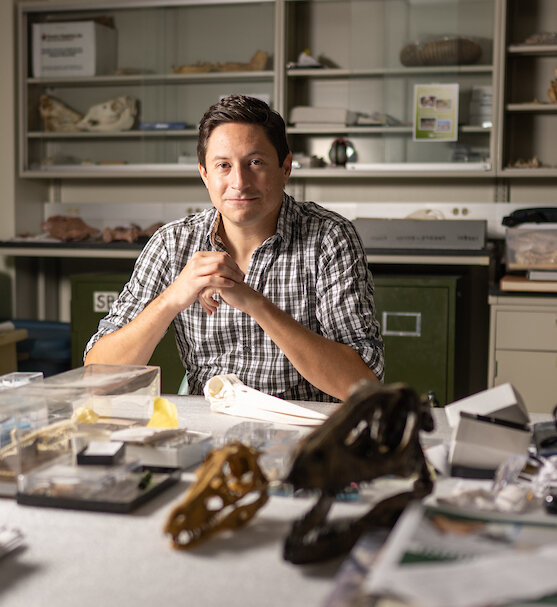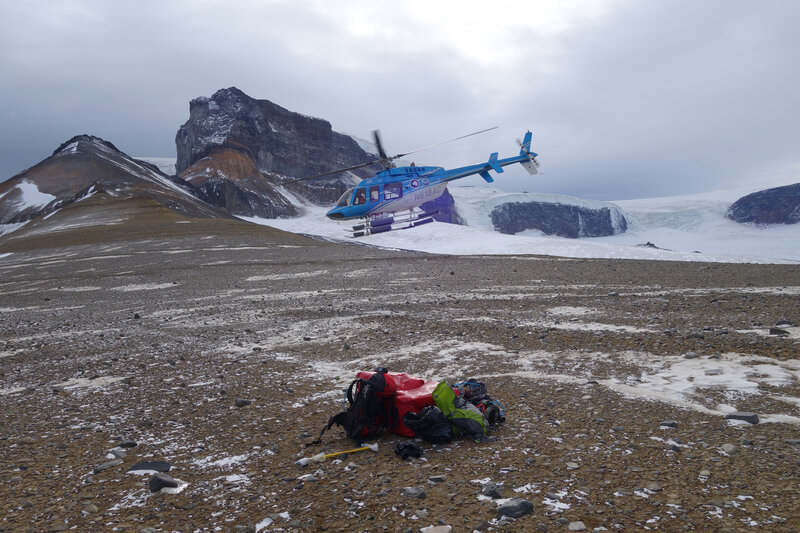
- Scientists have discovered the earliest-known modern bird in the fossil record, dating back 69 million years.
- An almost complete skull of the loon-like bird Vegavis iaai shows features found in modern birds.
- Scientists found this fossil in Antarctica. The location suggests this region may have played a role in modern birds’ survival of the dinosaur-killing asteroid.
Skull in Antarctica is the earliest modern bird fossil
How did some birds survive the asteroid that killed the dinosaurs? A fossilized skull might be a new piece of the puzzle. On February 7, 2025, researchers from Ohio University said that a nearly complete skull found in Antarctica is the earliest-known modern bird in the fossil record. It belonged to a loon-like bird called Vegavis iaai that lived 69 million years ago.
The researchers published their findings in the peer-reviewed journal Nature on February 5, 2025.
The 2025 EarthSky lunar calendar makes a great gift. Get yours today!
What scientists know about Vegavis iaai
Vegavis iaai has been a controversial bird species. Scientists first discovered its fossils 20 years ago. Initially, they did not have enough of its skeleton to properly characterize it as a modern bird. Lead author Christopher Torres, NSF postdoctoral research fellow at Ohio University, said:
Few birds are as likely to start as many arguments among paleontologists as Vegavis. This new fossil is going to help resolve a lot of those arguments. Chief among them: where is Vegavis perched in the bird tree of life?
The Vegavis skull, excavated from Vega Island in Antarctica in 2011, is providing new insights into this creature. For instance, scientists said the skull shows traits of modern birds, such as the shape of the brain case and a beak without teeth. Also, Vegavis’s skull shows this ancient bird had powerful jaw muscles, needed for overcoming water resistance when it was diving for fish. It resembled a loon, and it might have been an ancestor of waterfowl.
Meanwhile, previously discovered Vegavis fossils are adding to its story. Researchers think this bird propelled itself underwater, as it pursued its prey, using its feet as paddles. Some diving waterfowl use this same feeding strategy today.

Bird fossil hints at life after the asteroid
Birds are the only living descendants of dinosaurs. Non-bird dinosaurs perished 66 million years ago when an asteroid impact near the Yucatán Peninsula of Mexico caused catastrophic changes to Earth’s climate. After that planet-wide calamity, the birds that survived continued to evolve. Therefore, we have the high diversity of birds we see today.
Scientists think the ancestors of birds arose during the Jurassic Period (201 to 143 million years ago) from a group of dinosaurs known as theropods. And they continued evolving during the Cretaceous Period (143 to 66 million years ago).
Modern birds, similar to the species we see today, first appeared during the late Cretaceous, at locations such as Antarctica. There were also more primitive bird forms in the fossil record. But they barely resembled birds of today. Co-author Patrick O’Connor of Ohio University said:
This fossil underscores that Antarctica has much to tell us about the earliest stages of modern bird evolution. And those few places with any substantial fossil record of Late Cretaceous birds, like Madagascar and Argentina, reveal an aviary of bizarre, now-extinct species with teeth and long bony tails, only distantly related to modern birds. Something very different seems to have been happening in the far reaches of the Southern Hemisphere, specifically in Antarctica.

Did Antarctica play a crucial role in modern bird evolution?
During the late Cretaceous, Antarctica was ice-free. It had a temperate climate with forests of conifers, cycads and ferns. So Vegavis lived among a diverse fauna of other birds, non-avian dinosaurs, insects, reptiles, pterosaurs and small early mammals.
Could Vegavis have survived because it was relatively sheltered in the Antarctica? There’s a considerable distance between the impact site near the Yucatán Peninsula of Mexico and Antarctica. So Antarctica may have allowed some birds to survive the environmental upheaval caused by the asteroid impact.
Co-author Matthew Lamanna of Carnegie Museum of Natural History said:
Antarctica is in many ways the final frontier for humanity’s understanding of life during the Age of Dinosaurs.

Bottom line: A nearly complete bird fossil skull, found in Antarctica and dated to 69 million years old, is the earliest known modern bird in the fossil record. It suggests modern birds may have survived the dinosaur-killing asteroid by finding refuge in Antarctica.
Source: Cretaceous Antarctic bird skull elucidates early avian ecological diversity
Read more: Wonderchicken fossil casts new light on bird evolution
Source link
Read More
Visit Our Site
Read our previous article: Signs of life on Enceladus might remain hidden in its ocean